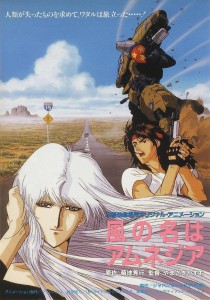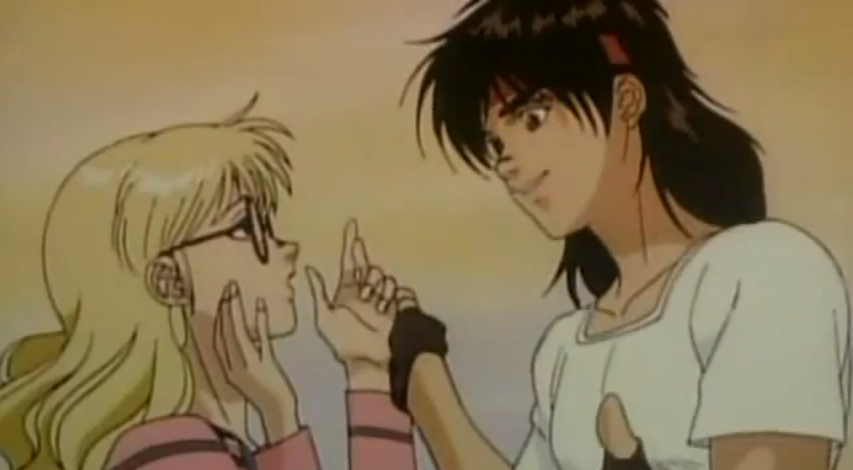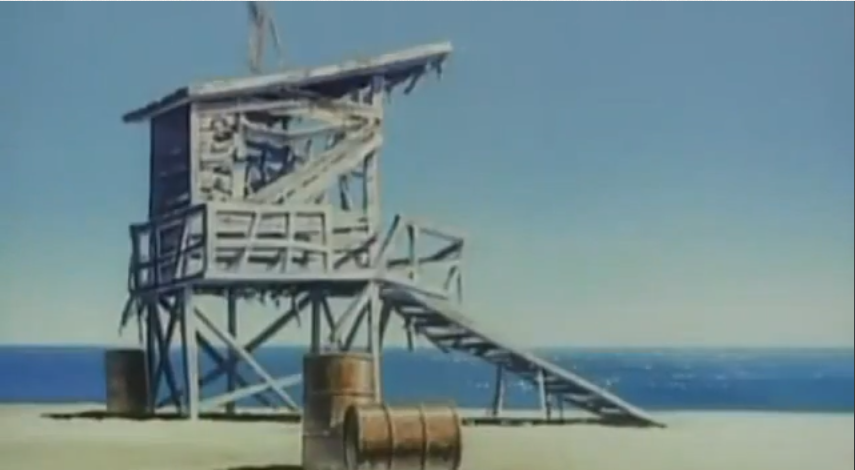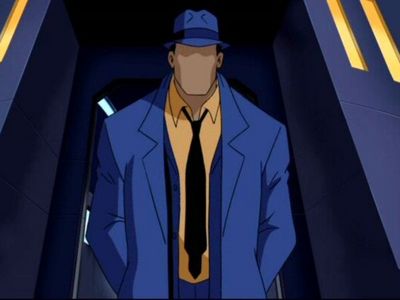 Title: A Wind Named Amnesia
Title: A Wind Named Amnesia
Director: Kazuo Yamazaki
Writers: Kazuo Yamazaki, Yoshiaki Kawajiri, and Kenji Kurata (created by Hideyuki Kikuchi)
Distributed By: Madhouse
Starring (English): Adam Henderson, Denica Fairman, Lee Tyler, and Susie Baker
Release Date: December 22nd, 1990
Hideyuki Kikuchi Movie Monday Marathon is coming to an end. We’ve checked out Vampire Hunter D and Wicked City, so now it’s time to take a look at A Wind Named Amnesia.
Like Kikuchi’s other works, A Wind Named Amnesia is a story that has an interesting high concept with the title being upfront about the plot. Basically one day a wind blows throughout the world and everyone loses their memories. Not just their memories mind you, but all knowledge except for the very basic of instincts. The only person who has basic comprehension (equivalent to a child) and basic memory is Wataru (Adam Henderson) after regaining his ability to think from Johnny (Lee Tyler), a crippled child who still had memories due to a military operation that implanted a hard drive into his brain. Wataru is instructed to travel around the world to teach man to think again, and after meeting a mysterious intelligent woman, Sophia (Denica Fairman), the two travel to New York City to see what has become of America.
The difference between the high concepts of (the anime versions of) Wicked City and A Wind Named Amnesia, is where Wicked City fails to take the idea and add any depth and story to it, A Wind Named Amnesia milks it for all it’s worth. Theme and philosophical waxing play a huge role in the film, asking questions about humanity and society. However, even though there is much dialog that creates a Socratic exercise, it never feels like a filibusterer or a lecture.
The script itself is well-written, and the English translation is smooth and without any bad mistranslations. All of the scenes serve the story and the plot is pretty tight in structure.
Along with the plot, the writers did a good job with characterizations. Each character comes off as completely memorable, probably due to the casting. Adam Henderson makes Wataru sound like a man with the comprehension of a smart child, while Denica Fairman gives Sophia a calm and wise persona.
While the story has completely held up, the animation has aged more than its contemporaries. The low budget is very apparent in some of the scenes, especially when they use techniques such as freeze frames and occasionally rough patches of fewer frames in order to save on the budget. Fortunately the animation is made up in some part by the choreography, which does try to mix things up with creative (but somewhat realistic) solutions during the battle scenes, some interesting chase scenes, and even a few proto-bullet time sequences.
The artwork has an interesting style that at times seems to almost border on Western animation. There’s some beautiful shots from time to time and its style is unique enough to separate it from countless atypical animes. Just like the animation, the budget becomes its biggest drawback and there’s less detail than it could’ve had, especially when it comes to character drawings. Sometimes there’s a great amount of detail given, other times it seems to be lacking. Though fortunately it’s made up for by a diverse cast of a wide age range, body types, and physical personalities.
One of Hideyuki Kikuchi’s greatest strengths is his ability to create breathtakingly vivid dystopian scenes, and Yamazaki makes sure they go from page to screen seamlessly and with surprising detail. This not only goes for the wastelands of San Francisco or New York, but also the beaches and grassy plains. It’s not so much the details that make the background work, but rather the simple things such as the sparkles in the sea or the occasional breeze blowing that make it feel alive.
Perhaps what’s most impressive about the production is the music. Yes, perhaps the piano ballads are cheesy, but even the corniest of Hibenobu Takimoto and Kazuhiko’s scores seem to completely work in the film. And it’s a shame that unlike Vampire Hunter D, A Wind Named Amnesia never got a US release of the soundtrack.
Ultimately, A Wind Named Amnesia is one of the best animes you’ve never seen and is a film worth tracking down (perhaps on Youtube…). It’s a film with both intellect and heart and most importantly, A Wind Named Amnesia is a film with a well-executed concept that’s certainly memorable.
Andrew Hudson
ahudson@comicattack.net
@Hudsonian





